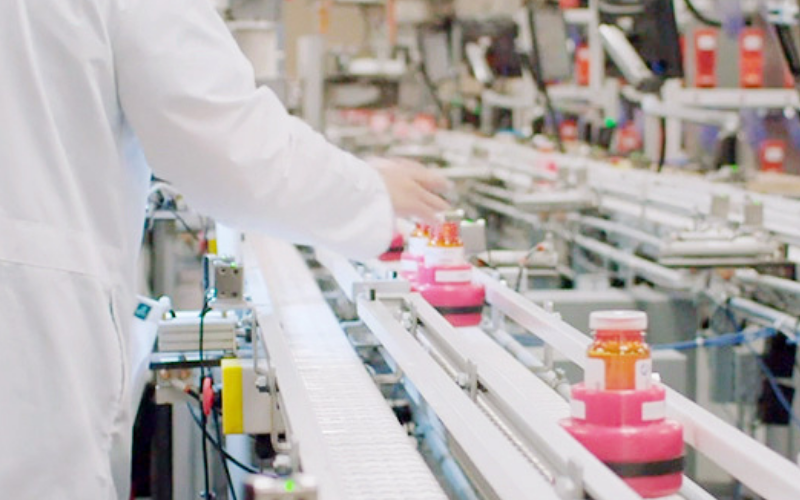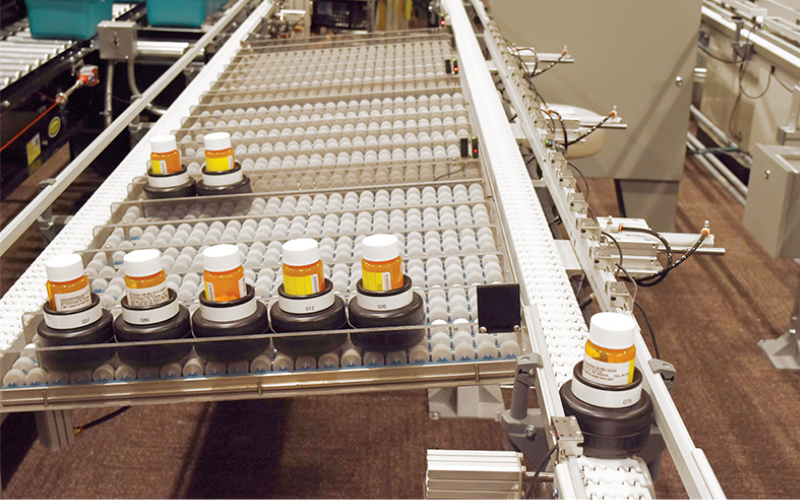Streamline Central Pharmacy Operations: Tips & Tools
A consolidated pharmaceutical service model involves a centralized location for prescription processing, dispensing, and related activities that traditionally occur within individual pharmacies or healthcare facilities. This approach optimizes resource allocation and ensures consistent application of pharmaceutical protocols. For example, a hospital system might consolidate all its prescription fulfillment activities for outpatient clinics into a single, highly efficient facility, rather than operating separate pharmacies at each clinic location.
This streamlined system offers numerous advantages, including improved accuracy in medication dispensing, reduced medication errors, and enhanced inventory management. Historically, healthcare institutions have adopted this strategy to mitigate costs, improve patient safety, and ensure adherence to regulatory standards. The consolidation allows for greater purchasing power, leading to cost savings on medications and supplies. Furthermore, specialized expertise and advanced technology can be concentrated in one location, improving the quality of pharmaceutical services.
The subsequent sections will delve into specific facets of this operational model, examining its various components, the technologies driving its efficiency, the regulatory considerations shaping its practice, and the impact on patient care and overall healthcare economics. This analysis aims to provide a comprehensive understanding of the functions, challenges, and potential of this increasingly prevalent approach to pharmaceutical care.
- Jon Batiste Bio Age Parents Wife Children
- A Glance At Ayana Fite Net Worth
- Connor Payton Is Sean Payton S Son
- Few Untold Truth About Masters Of Flip
- Meet Olivia Palermo Parents Douglas Palermo Lynn
Frequently Asked Questions About Centralized Pharmaceutical Services
The following questions address common inquiries and concerns regarding the implementation and operation of centralized pharmaceutical services within healthcare systems and other organizations.
Question 1: What are the primary advantages of adopting a centralized model for pharmaceutical services?
The primary advantages include enhanced efficiency, improved medication safety through standardized processes, reduced costs via bulk purchasing and optimized inventory management, and the ability to leverage specialized expertise and technology across a larger scale. This model also facilitates better regulatory compliance.
- Sam Frank 360 Twirl Video Who Is
- Denise Nicholas Age Bio Wiki Height Net
- Who Is Kevin Bacon S Son Travis
- Duane Underwood Jr Family Parents Ethnicity Where
- Does Phaedra Parks Own A Funeral Home
Question 2: How does a centralized pharmaceutical service ensure medication safety and accuracy?
Medication safety is ensured through the implementation of standardized dispensing protocols, automated dispensing technologies, and rigorous quality control measures. Pharmacists in a centralized setting can dedicate more time to verifying prescriptions, reviewing patient profiles, and monitoring for potential drug interactions.
Question 3: What role does technology play in centralized pharmaceutical operations?
Technology is integral to the operation of these services. Automated dispensing systems, electronic health record (EHR) integration, sophisticated inventory management software, and robotic prescription fulfillment systems are all commonly employed to enhance accuracy, efficiency, and traceability.
Question 4: How are patient privacy and confidentiality protected within a centralized model?
Patient privacy is safeguarded through adherence to HIPAA regulations and the implementation of robust security measures. Data encryption, access controls, and secure communication protocols are employed to protect patient information at all stages of the prescription fulfillment process.
Question 5: What are the key challenges in implementing and managing a centralized pharmaceutical service?
Key challenges include the initial capital investment in technology and infrastructure, the need for significant staff training and process redesign, ensuring seamless integration with existing healthcare systems, and managing logistical complexities related to medication delivery and distribution.
Question 6: How does centralization impact the role of pharmacists and pharmacy technicians?
Centralization often allows pharmacists to focus on more clinical and patient-centered activities, such as medication therapy management and patient counseling. Pharmacy technicians may assume more specialized roles in dispensing, automation maintenance, and quality control, requiring enhanced skills and training.
In summary, the move toward a centralized approach to pharmaceutical services represents a significant shift in healthcare delivery, demanding careful planning, execution, and ongoing monitoring to realize its full potential.
The next section will address specific technological advancements driving innovations in this field.
Central Pharmacy Operations
Effective implementation and sustained success in central pharmacy operations necessitate meticulous planning and execution. The following tips provide insights for organizations considering or currently operating such systems.
Tip 1: Conduct a Comprehensive Needs Assessment: Before implementation, perform a thorough analysis of the current pharmaceutical workflows, patient volume, medication usage patterns, and existing infrastructure. This assessment will inform the design of the centralized operation and ensure it meets the specific needs of the organization. For instance, a hospital system should evaluate the prescribing habits of its physicians and the types of medications most frequently dispensed.
Tip 2: Prioritize Technology Integration: Seamless integration of technology systems, including EHRs, automated dispensing cabinets, and inventory management software, is crucial. Lack of integration can lead to errors, inefficiencies, and reduced productivity. Ensure that all systems can communicate effectively to provide a unified view of patient medication profiles and inventory levels.
Tip 3: Standardize Processes and Protocols: Develop and implement standardized operating procedures for all aspects of pharmaceutical processing, dispensing, and distribution. Consistency is essential for maintaining accuracy and reducing the risk of medication errors. Establish clear protocols for prescription verification, drug compounding, and quality control.
Tip 4: Invest in Staff Training and Development: Adequate training is vital for ensuring staff proficiency in operating new technologies and adhering to standardized procedures. Provide ongoing professional development opportunities to keep staff updated on best practices and regulatory changes. This includes specialized training for pharmacists, technicians, and support personnel.
Tip 5: Establish Robust Quality Control Measures: Implement rigorous quality control measures at every stage of the pharmaceutical process. This includes regular audits of dispensing accuracy, inventory management, and adherence to standard operating procedures. Establish a system for reporting and investigating medication errors and near misses.
Tip 6: Optimize Inventory Management: Effective inventory management is critical for minimizing waste, reducing costs, and ensuring medication availability. Implement an inventory management system that tracks medication expiration dates, monitors stock levels, and automates ordering processes. Consider utilizing just-in-time inventory management strategies.
Tip 7: Secure Medication Delivery Systems: Implement secure and reliable medication delivery systems to ensure that medications reach patients in a timely and safe manner. This includes establishing chain-of-custody protocols, utilizing tamper-evident packaging, and monitoring delivery routes. Collaborating with reputable delivery services is recommended.
Effective implementation of these tips enables organizations to maximize the benefits of streamlined pharmaceutical services, leading to improved patient outcomes, reduced costs, and enhanced operational efficiency.
The concluding section will summarize the key advantages of the this type of pharmaceutical service model and its future role in healthcare.
Conclusion
The preceding analysis has illuminated the multifaceted nature of central pharmacy operations. From its roots in cost-saving initiatives to its potential for elevating patient safety and streamlining medication management, the operational model presents a compelling framework for modern pharmaceutical services. Key advantages, including optimized resource allocation, improved accuracy in medication dispensing, and enhanced regulatory compliance, have been extensively examined. Further, the role of technology, the importance of standardized processes, and the necessity of comprehensive staff training have been emphasized as critical components of successful implementation.
As healthcare systems continue to evolve, the strategic importance of these functions is poised to increase. Organizations are therefore encouraged to thoughtfully evaluate and strategically implement these operational models to maximize efficiency, enhance patient care, and ensure long-term sustainability in the face of increasing pharmaceutical demands and complexities. Continued research and innovation in this area are crucial to realizing the full potential of the model and shaping the future of pharmaceutical services.
- Chelsea Gibb Biography Age Height Husband Net
- Dorinda Medley Bio Net Worth Husband Or
- A Glance At Ayana Fite Net Worth
- Robert Hernandez Bio Age Wiki Facts And
- Bishop Briggs Husband Did Not Propose Her

Why Centralized Pharmacy Operating Models Work Parata
Centralized Filling Pharmacy Solutions Parata

Why Centralized Pharmacy Operating Models Work Parata